 W
WThe Albigensian Crusade or the Cathar Crusade was a 20-year military campaign initiated by Pope Innocent III to eliminate Catharism in Languedoc, in southern France. The Crusade was prosecuted primarily by the French crown and promptly took on a political flavour, resulting in not only a significant reduction in the number of practising Cathars, but also a realignment of the County of Toulouse in Languedoc, bringing it into the sphere of the French crown, and diminishing both Languedoc's distinct regional culture and the influence of the counts of Barcelona.
 W
WThe Aragonese Crusade or Crusade of Aragon, a part of the larger War of the Sicilian Vespers, was declared by Pope Martin IV against King Peter III of Aragon in 1284 and 1285. Because of the recent conquest of Sicily by Peter, Martin declared a crusade against him and officially deposed him as king, on the grounds that Aragon was a papal fief: Peter's grandfather and namesake, Peter II, had surrendered the kingdom as a fief to the Holy See. Martin bestowed Aragon on Peter's nephew Count Charles of Valois, son of King Philip III of France.
 W
WThe Barons' Crusade, also called the Crusade of 1239, was in territorial terms the most successful crusade since the First Crusade. Called by Pope Gregory IX, the Barons' Crusade broadly spanned from 1234-1241 and embodied the highest point of papal endeavor "to make crusading a universal Christian undertaking." Gregory called for a crusade in France, England, and Hungary with different degrees of success. Although the crusaders did not achieve any glorious military victories, they used diplomacy to successfully play the two warring factions of the Muslim Ayyubid dynasty against one another for even more concessions than Frederick II gained during the more well-known Sixth Crusade. For a few years, the Barons' Crusade returned the Kingdom of Jerusalem to its largest size since 1187.
 W
WThe Battle of Las Navas de Tolosa, known in Arab history as the Battle of Al-Uqab, took place on 16 July 1212 and was an important turning point in the Reconquista and in the medieval history of Spain. The Christian forces of King Alfonso VIII of Castile were joined by the armies of his rivals, Sancho VII of Navarre and Peter II of Aragon, in battle against the Almohad Muslim rulers of the southern half of the Iberian Peninsula. The caliph al-Nasir led the Almohad army, made up of people from all over the Almohad Caliphate.
 W
WThe Crusade of 1267 was a military expedition from the Upper Rhenish regions of the Holy Roman Empire for the defence of the Kingdom of Jerusalem. It was one of several minor crusades of the 1260s that resulted from a period of Papally-sponsored crusade preaching of unprecedented intensity. The only major crusade to come of it was the Eighth Crusade in 1270.
 W
WThe Eighth Crusade was a crusade launched by Louis IX of France against the Hafsid dynasty in 1270. The Eighth Crusade is sometimes counted as the Seventh, if the Fifth and Sixth Crusades of Frederick II are counted as a single crusade. The Ninth Crusade is sometimes also counted as part of the Eighth. The crusade is considered a failure after Louis died shortly after arriving on the shores of Tunisia, with his disease-ridden army dispersing back to Europe shortly afterwards.
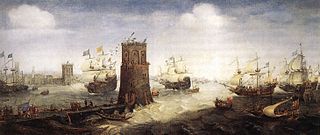 W
WThe Fifth Crusade (1217–1221) was an attempt by Western Europeans to reacquire Jerusalem and the rest of the Holy Land by first conquering Cairo, the capital of the powerful Ayyubid state in Egypt.
 W
WThe Fourth Crusade (1202–1204) was a Latin Christian armed expedition called by Pope Innocent III. The stated intent of the expedition was to recapture the Muslim-controlled city of Jerusalem, by first conquering the powerful Egyptian Ayyubid Sultanate, the strongest Muslim state of the time. However, a sequence of economic and political events culminated in the Crusader army's 1204 Sack of Constantinople, the capital of the Greek Christian-controlled Byzantine Empire, rather than Egypt as originally planned.
 W
WSeveral attempts at a Franco-Mongol alliance against the Islamic caliphates, their common enemy, were made by various leaders among the Frankish Crusaders and the Mongol Empire in the 13th century. Such an alliance might have seemed an obvious choice: the Mongols were already sympathetic to Christianity, given the presence of many influential Nestorian Christians in the Mongol court. The Franks were open to the idea of support from the East, in part owing to the long-running legend of the mythical Prester John, an Eastern king in an Eastern kingdom who many believed would one day come to the assistance of the Crusaders in the Holy Land. The Franks and Mongols also shared a common enemy in the Muslims. However, despite many messages, gifts, and emissaries over the course of several decades, the often-proposed alliance never came to fruition.
 W
WThe Lithuanian Crusade was a series of economic Christian colonization campaigns by the Teutonic Order and the Livonian Order, two crusading military orders, under the religious pretext of forcibly Christianizing the "pagan" Grand Duchy of Lithuania into Roman Catholicism. The Livonian Order occupied Riga in 1202 and the Teutonic Order conquered Culmerland in 1230s. They first conquered other neighboring Baltic tribes – Curonians, Semigallians, Latgalians, Selonians, Old Prussians. The first raid against the Lithuanians and Samogitians was in 1208 and the Orders played a key role in Lithuanian politics, but they were not a direct and immediate threat until 1280s. By that time the Grand Duchy of Lithuania was already a centralized state and could mount centralized defense. Thus for the next century the Order organized annual colonialist reise (raids) into the Samogitian and Lithuanian lands without great success but at immense human cost: border regions in Samogitia and Suvalkija became sparsely inhabited wilderness due to ethnic cleansing and genocide, although the Order gained very little territory. The war between the Teutonic Order and Lithuania was one of the longest wars in the history of Europe.
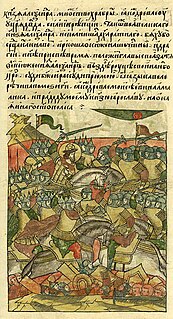 W
WThe Livonian campaign against Rus' was a military campaign that lasted from 1240 to 1242, and was carried out by the Teutonic Knights of the Livonian Order with the aim to conquer the lands of Pskov and Novgorod and convert them to Catholicism.
 W
WThe Livonian Crusade refers to the various Christianization campaigns in the area constituting modern Lithuania, Latvia and Estonia during the Papal-sanctioned Northern Crusades. It was conducted mostly by Germans from the Holy Roman Empire and Danes. It ended with the creation of the Terra Mariana and Duchy of Estonia. The lands on the eastern shores of the Baltic Sea were the last corners of Europe to be Christianized.
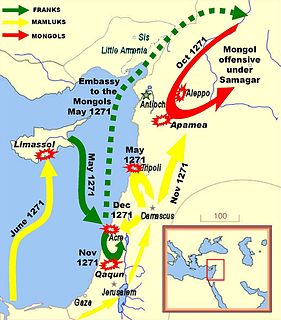 W
WLord Edward's crusade, sometimes called the Ninth Crusade, was a military expedition to the Holy Land under the command of the future King Edward I of England in 1271–1272. It was an extension of the Eighth Crusade and was the last of the Crusades to reach the Holy Land before the fall of Acre in 1291 brought an end to the permanent crusader presence there.
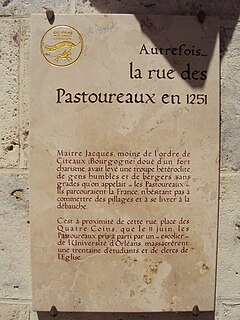 W
WThe Shepherds' Crusade of 1251 was a popular crusading movement in northern France aimed at rescuing King Louis IX during the Seventh Crusade.
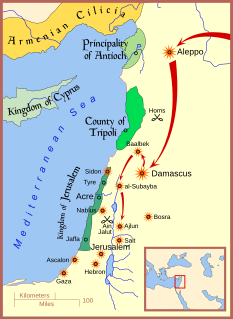 W
WMongol raids into Palestine took place towards the end of the Crusades, following the temporarily successful Mongol invasions of Syria, primarily in 1260 and 1300. Following each of these invasions, there existed a period of a few months during which the Mongols were able to launch raids southward into Palestine, reaching as far as Gaza.
 W
WThe Seventh Crusade was a crusade led by Louis IX of France from 1248 to 1254. Louis' Christian army was defeated by the Ayyubid army led by Fakhr al-Din ibn Shaykh al-Shuyukh and their allies, the Bahriyya Mamluks, led by Faris ad-Din Aktai, Baibars al-Bunduqdari, Qutuz, Aybak and Qalawun. Shaykh al-Shuyukh was killed in the war, and Louis was captured. Approximately 800,000 bezants were paid in ransom for his return.
 W
WThe Shepherds' Crusade of 1251 was a popular crusading movement in northern France aimed at rescuing King Louis IX during the Seventh Crusade.
 W
WThe Sixth Crusade, commonly known as the Crusade of Frederick II (1228–1229), was a military expedition to recapture the city of Jerusalem. It began seven years after the failure of the Fifth Crusade and involved very little actual fighting. The diplomatic maneuvering of the Holy Roman Emperor and King of Sicily, Frederick II, resulted in the Kingdom of Jerusalem regaining some control over Jerusalem for much of the ensuing fifteen years as well as over other areas of the Holy Land.
 W
WThe Stedinger Crusade (1233–1234) was a Papally-sanctioned war against the rebellious peasants of Stedingen.
 W
WThe Third Swedish Crusade to Finland was a Swedish military expedition against the pagan Karelians in 1293.